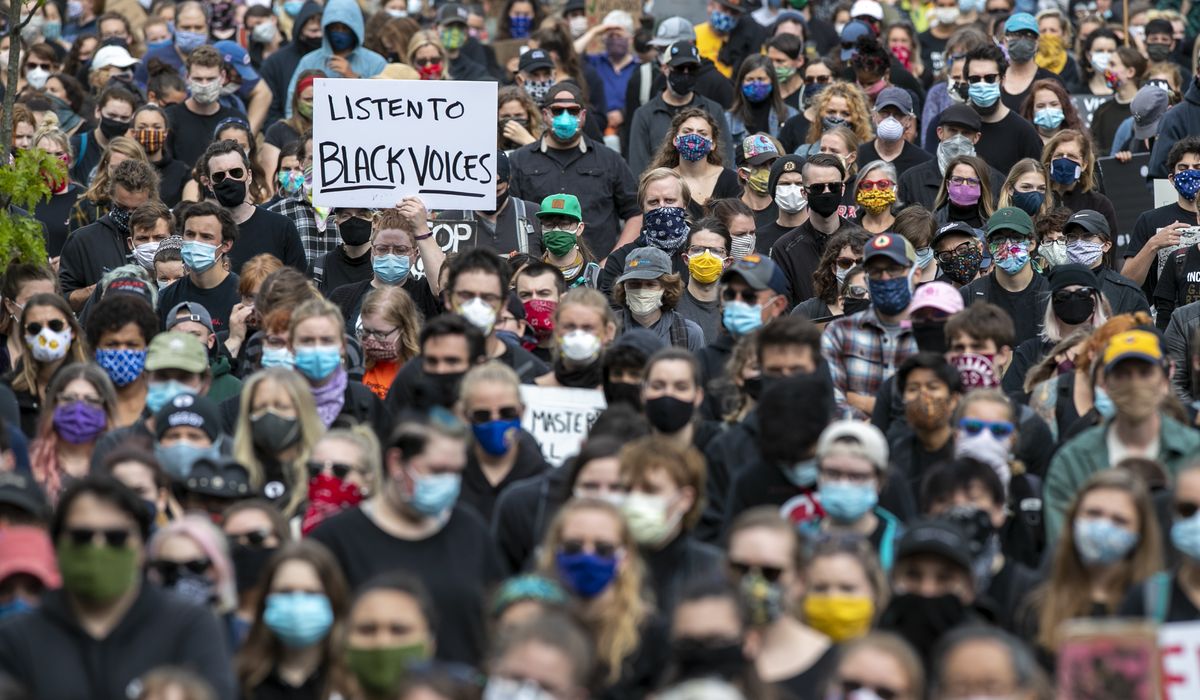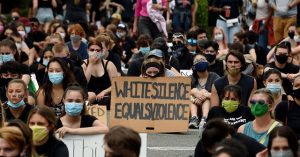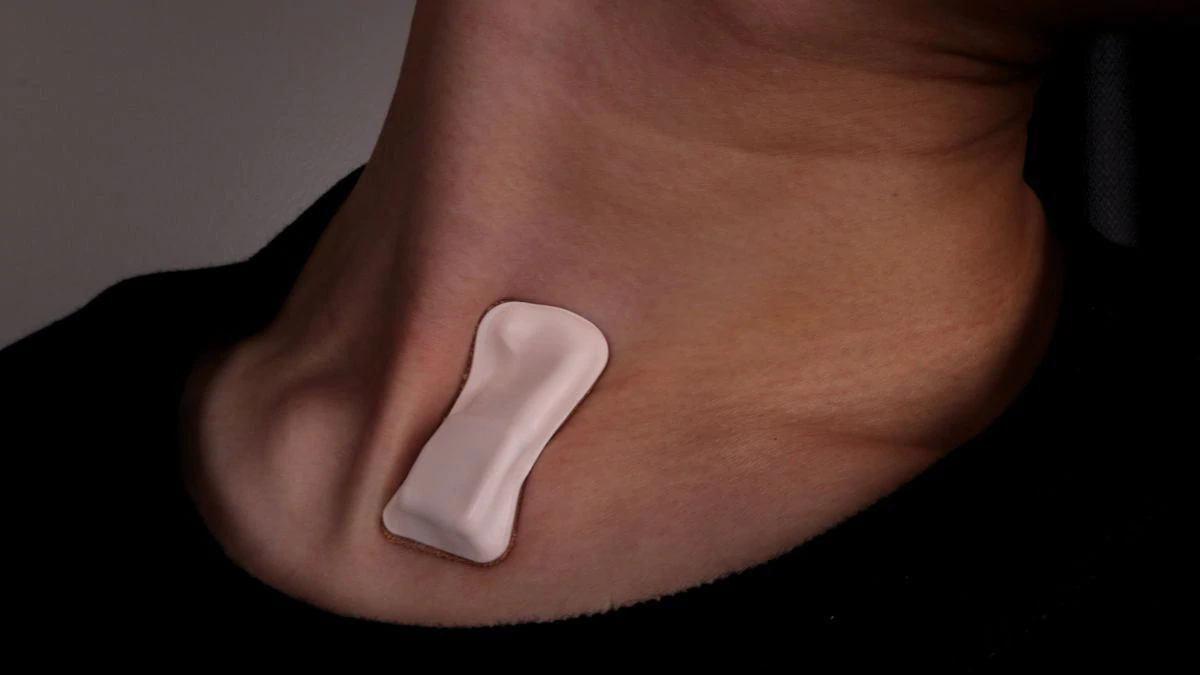The coronavirus pandemic is entering a complicated, hold-your-breath stage in the U.S. as states work to stamp out flare-ups and pray their hospitals can handle an anticipated rise in cases as their economies reopen and Americans socialize again.
The New York City region that saw the worst of the pandemic is doing far better, though parts of California and Texas are seeing an increase in cases as they get back to normal, and hospitals in the Twin Cities are being filled with COVID-19 patients even as they fear a spike in cases caused by the protests over George Floyd’s death in Minneapolis.
Many of the protesters are young and less vulnerable to getting sick, though marchers could catch the virus while gathering and further spread the bug in minority communities that are already reeling from the pandemic, scientists say.
Newly confirmed cases are rising in more than a dozen states — sometimes because of an increase in testing — and there are clusters of hotspots in rural towns with prisons and meat-processing plants vulnerable to outbreaks.
The upshot is a country that is approaching 2 million confirmed infections and a complex struggle to navigate down a transmission slope that spiked with frightening speed earlier this year.
“If I were to describe the pandemic in the United States overall now, it would be that there are low embers burning within the metropolitan areas and there are little sparking fires heading off all over the heartland,” said William Hanage, an associate professor of epidemiology at Harvard University. “Numbers are hovering around steady, but we have to remember that is reflecting a decrease in the Northeast and a slow increase which is replacing that elsewhere.”
Experts said they should be able to tell by the latter half of June whether efforts to reopen and mingle once again resulted in a spate of new infections.
“The metric that is most firm, even though it is delayed, is hospitalizations of people with lab-confirmed COVID-19,” said William Schaffner, an infectious disease specialist at Vanderbilt University. “If that starts to tick up, then we start to frown, because it means there is, indeed, more transmission out there.”
About 40,000 COVID-19 patients were in U.S. hospitals at the start of June compared to 34,000 in mid-May.
Many states are seeing their hospitalizations fall, especially in the Northeast, while more than a dozen are relatively steady. A handful are seeing an uptick, however.
Hospitalizations in Arizona surpassed 1,000 for the first time Monday, sparking a debate about the lifting of its stay-at-home order in mid-May and what can or should be done.
“A state like Arizona is concerning. The scope of the rise and the velocity is concerning,” former FDA Commissioner Scott Gottlieb told CNBC. “It’s going to be very hard, though, for a lot these governors to go backward and start implementing mitigation again.
“They’re probably going to tolerate a higher level of infection than we were willing to on the first go-round, and that just sets up more risk,” he said, noting flare-ups in some states could “re-seed” parts of the country with the disease.
Hospitals in Montgomery, Alabama, and the Twin Cities in Minneapolis also have been taxed recently with COVID-19 patients.
“We are getting closer and closer to being overly full,” Caitlin Eccles-Radtke, an infectious disease physician at Hennepin County Medical Center in Minneapolis, told MedPage Today.
The national conversation has pivoted to protests following the death of Mr. Floyd, a black man who died after a white Minneapolis police officer kneeled on his neck for nearly nine minutes. Still, the coronavirus that dominated global headlines since the start of the year remains a challenge, infecting 1.8 million people — and counting — in the U.S. and killing more than 107,000.
States are trying to make sure high-risk populations are tested. That includes prison inmates, meat-processing workers and nursing home residents. The Trump administration recently announced data linking 26,000 deaths to nursing homes across the country.
The pandemic also continues to have an outsized effect on minority populations.
Federal data show black Americans, who make up 13% of the U.S. population, account for 23% of COVID-19 deaths, and black residents account for more than half of infections in multiple southern states.
Experts say the racial disparities are due to underlying health issues in minority populations, and frustrations with the U.S. response to the virus are further fueling protests over racial injustice.
Some parts of the country are reporting good news.
New York, the hardest-hit state, reported fewer than 1,000 cases on June 1, compared to about 4,000 on May 1 and 8,000 on April 1. Though the numbers are still much higher than other parts of the country, the trend line is positive.
“The tri-state region actually looks very good right now,” Dr. Gottlieb told CNBC.
New York City officials said buses and subway lines will include social-distancing decals and hand sanitizers placed through stations when the city begins to lift restrictions next week.
In Pennsylvania, a large number of counties will move Friday to the “green phase” that eases many restrictions and lets businesses move from 50% capacity under the yellow stage to 75%. Areas of southeastern Pennsylvania and Philadelphia will enter the yellow phase, in which some business may open but telework is mandated “where feasible.”
“We continue to see around 500-700 cases a day, and these are among different populations, but long-term care facilities remain a concern that we are continuing to assist,” Pennsylvania Health Department spokesman Nate Wardle said.
Scientists are worried the virus will strike in a “second wave” this fall, after a potential lull in transmission due to hot and humid weather, yet the virus is starting to wreak havoc in Latin America as countries in the Southern Hemisphere enter their winter.
At the same time, disease-trackers are looking backward, trying to get a better sense of overall exposure to COVID-19 since the start of the outbreak. They are producing statistical averages based on serological testing that checks for antibodies to the disease.
Exposure ranges widely, from an estimated 2% of the population in Boise, Idaho, to roughly 20% in New York City, based on figures compiled by the American Enterprise Institute.
Elsewhere, antibody testing suggests roughly 17% of London’s population has been exposed compared to 10% in Paris and Wuhan, China, about 6% in Miami and nearly 5% in Los Angeles.
The virus was discovered in Wuhan in December and spread across the globe in the early months of 2020, upending American life as President Trump urged people to work and learn at home and avoid large gatherings.
Governors issued a patchwork of state-at-home orders that closed most businesses, while allowing food and other essential services to continue.
The Centers for Disease Control and Prevention said as people hunkered at home, emergency department visits plummeted by 42% in the early pandemic period between late March and late April compared to similar dates in 2019. The biggest declines were among children younger than 14, females and residents of the Northeast region, the CDC report said, suggesting the virus scared people away from seeking care.
“The striking decline in ED visits nationwide, with the highest declines in regions where the pandemic was most severe in April 2020, suggests that the pandemic has altered the use of the ED by the public,” the agency said.
The CDC said hospitals should maintain clear triage procedures to keep COVID-19 patients separate from other emergency room patients. Health providers also should set up telephone lines to help people swiftly understand whether they need to report to the emergency room for injuries or other conditions, the agency said.



















